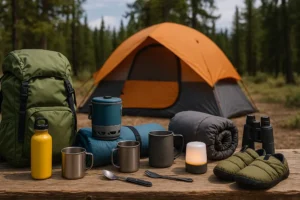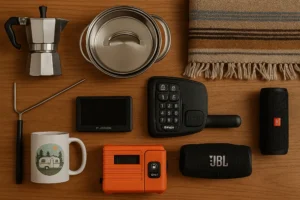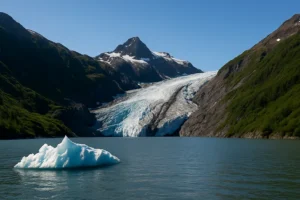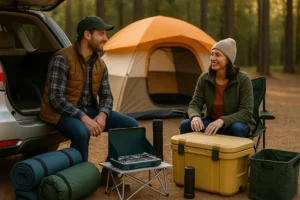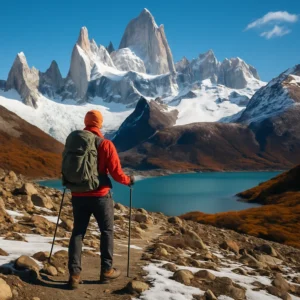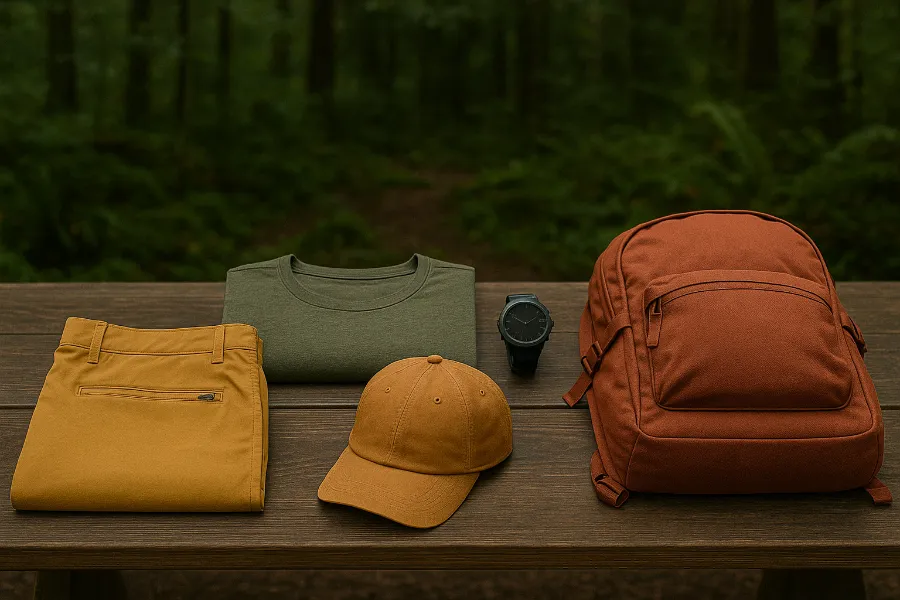
When you’re heading out on the trail, one of the most overlooked but crucial decisions is what you’re going to wear. The right hiking clothes for men can make or break your adventure. Choose poorly, and you’ll end up sweaty, uncomfortable, or even unsafe. Choose wisely, and your clothes will carry you through long miles, tough climbs, and unpredictable weather. This guide will walk you through the essentials — from base layers to jackets, pants, and footwear — so you know exactly what belongs in your pack and on your body.
Why the Right Hiking Clothes for Men Matter
You might think any athletic clothes will work for a hike. But hiking is different from hitting the gym or running on pavement. Trails throw dirt, rocks, mud, bugs, rain, and sun at you. That’s why hiking clothes for men are designed with performance fabrics and outdoor conditions in mind. They wick sweat, resist tears, dry quickly, and often provide sun or water protection.
In short, your clothing becomes gear. Just like your boots or backpack, it’s equipment that supports your comfort and safety.
Essential Base Layers
Hiking Underwear
Start with the layer closest to your skin. Skip cotton underwear — it traps moisture and causes chafing. Instead, choose wool or synthetic blends. Merino wool underwear is especially good at preventing odor on multi-day trips. A solid pair of boxer briefs built for hiking will keep you dry and supported all day long.
Hiking Socks
Never underestimate the power of socks. The wrong pair will leave you with blisters; the right pair will feel invisible on your feet. Look for merino wool or wool blends with padding in key spots. These wick away moisture, cushion your steps, and resist odor. Bring at least two pairs for longer hikes so you can switch to a dry set.
Shirts and T-Shirts
Your upper base layer should be breathable, quick-drying, and, ideally, sun-protective. Many modern hiking clothes for men use UPF-rated fabrics that protect your skin while you’re exposed to the sun for hours. Short sleeves work for most warm hikes, while long-sleeved sun shirts are excellent in desert or alpine environments. Avoid cotton — stick with polyester, nylon, or merino wool.
Bottoms
Hiking Pants
Convertible hiking pants are one of the most practical items you can own. They zip off into shorts when temperatures rise, then zip back down when you need protection from sun, bugs, or cold. Look for pants that are quick-drying, breathable, and, if possible, water-resistant. Reinforced knees and multiple pockets are a plus.
Leggings are another option. Though often marketed toward women, many brands now make men’s trekking leggings. They’re lightweight, protective, and offer freedom of movement. Just make sure you choose durable fabric to avoid tears in rocky or bushy terrain.
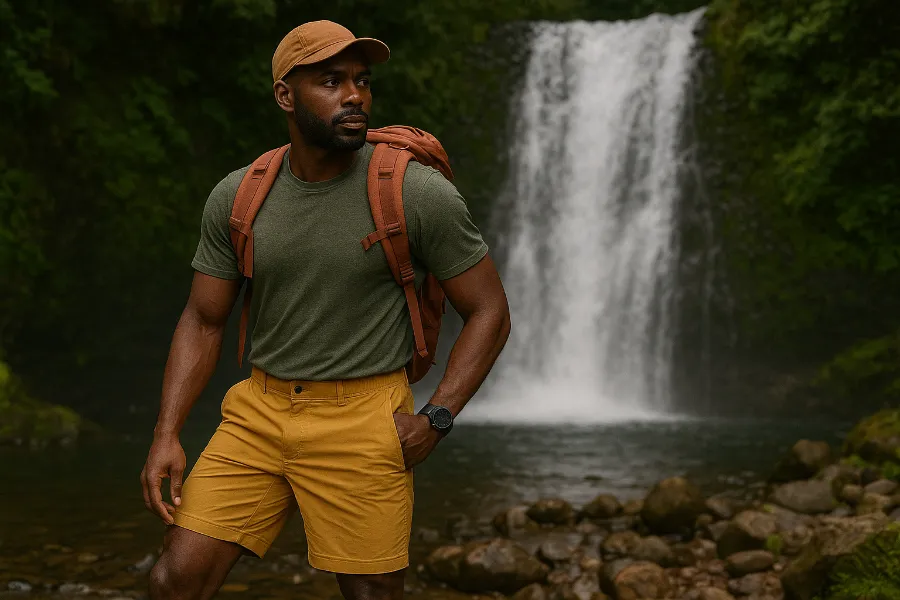
Hiking Shorts
When the weather allows, shorts are unbeatable for comfort. The best hiking shorts are lightweight, stretchy, and lined for support. Running-style shorts with breathable liners reduce chafing and allow you to move freely. For more rugged adventures, nylon hiking shorts with zippered pockets are a strong choice.
Outer Layers
Jackets
Weather changes fast in the outdoors. That’s why jackets are non-negotiable in hiking clothes for men.
- Waterproof jackets: These keep you dry in sudden downpours. Look for breathable membranes (like GORE-TEX or Omni-Tech) so you don’t sweat yourself wet from the inside.
- Windbreakers: Perfect for light protection against wind or mist. They pack down small and weigh almost nothing.
- Fleece jackets: Lightweight and warm, ideal as a mid-layer or for chilly evenings at camp.
- Down jackets: For cold-weather hikes, a packable down jacket provides serious insulation without much weight. Synthetic alternatives also work well if you expect damp conditions.
Mid-Layers
Between your shirt and outer jacket, you need something to hold warmth. Synthetic jackets and fleece tops are excellent for this. They’re breathable but trap enough heat to keep you comfortable when temperatures drop.
Footwear
Hiking Boots
For rough terrain, steep climbs, or backpacking with heavy loads, hiking boots are still the gold standard. A good boot offers ankle support, grippy soles, and waterproofing. Look for modern designs with lightweight midsoles so you’re not weighed down.
Trail Runners
If your hikes are on well-maintained trails, trail runners are often the best option. They’re lightweight, breathable, and keep you moving fast. Many long-distance hikers prefer trail runners over boots for comfort and reduced fatigue.
Hiking Sandals
In hot or wet conditions, sandals can be a surprising hero. A sturdy hiking sandal dries quickly, grips on wet rocks, and keeps your feet cool. They’re best for short hikes, river crossings, or as a camp shoe after a long day in boots.
Accessories
Hats and Caps
Protecting your head and face from the sun is critical. A wide-brimmed hat or a cap with UPF fabric can prevent sunburn. In colder conditions, swap this for a warm beanie.
Sunglasses
Glare and UV exposure can be intense on long hikes, especially at altitude or near water and snow. Polarized sunglasses reduce glare and protect your eyes from long-term damage.
Gloves
Depending on the conditions, gloves serve two roles: warmth and sun protection. Lightweight UV gloves are perfect for desert hiking, while insulated gloves keep your hands functional in the cold.
Gear That Complements Hiking Clothes
Even the best hiking clothes for men work better with the right supporting gear:
- Backpacks: A well-fitted daypack with hydration compatibility keeps essentials close without straining your shoulders.
- Hiking poles: Save your knees on long descents and add stability on tricky ground.
- Water systems: Whether you prefer a hydration bladder or a purifier bottle, staying hydrated is non-negotiable.
Seasonal Considerations
Hot Weather Hiking Clothes for Men
When temperatures soar, prioritize breathability and sun protection. Lightweight shirts with UPF fabric, shorts or convertible pants, and breathable socks are key. Avoid heavy boots unless necessary; trail runners or sandals are often better in the heat.
Cold Weather Hiking Clothes for Men
In winter or alpine conditions, layering becomes essential. Start with thermal base layers, add an insulating mid-layer (like fleece or synthetic jackets), and finish with a waterproof, windproof shell. Warm hats, gloves, and thicker socks complete the system.
Tips for Choosing the Best Hiking Clothes for Men
- Layer up: Use the three-layer system — base, mid, and outer — so you can adapt to changing conditions.
- Pick the right fabrics: Wool and synthetics are your best friends. Cotton is not.
- Balance comfort and performance: Some gear is ultra-technical, but comfort matters too. Choose clothes you’ll actually enjoy wearing.
- Test before long hikes: Break in boots, try out new shirts, and wear your setup on shorter hikes before committing to big adventures.
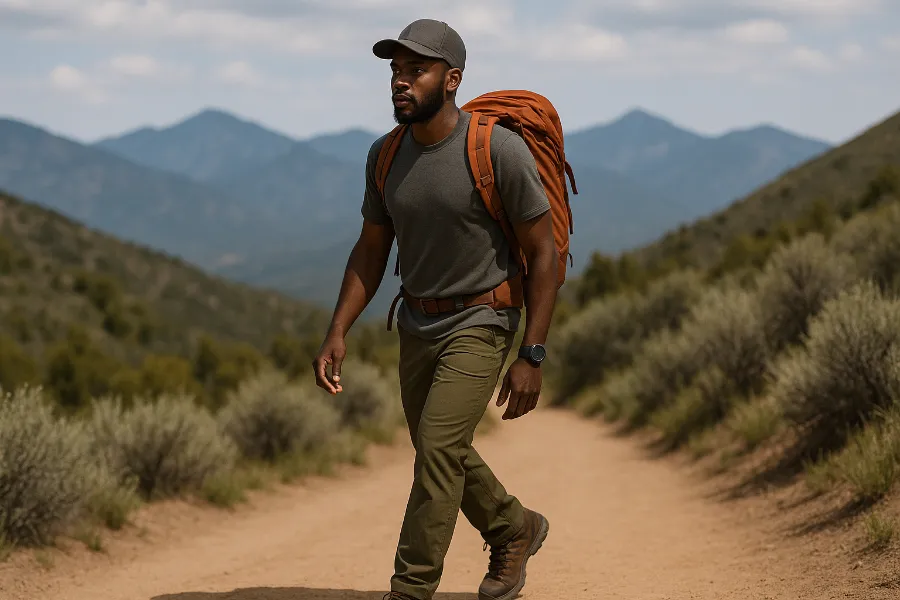
Quick FAQs
What should men wear for hiking in summer?
Lightweight, breathable clothing with sun protection. Shorts, UV-rated shirts, trail runners, and a cap are great choices.
Do I need hiking pants, or can I wear jeans?
Skip jeans. They’re heavy, hold moisture, and can cause chafing. Hiking pants or shorts are far superior.
Are hiking boots better than trail runners?
It depends. Boots offer support and durability on tough terrain. Trail runners are lighter and more comfortable for most day hikes.
Conclusion: Build Your Ideal Hiking Outfit
The best hiking clothes for men aren’t about following trends — they’re about function, comfort, and safety. Start with moisture-wicking base layers, add versatile pants or shorts, layer up with jackets, and finish with sturdy footwear. Then fine-tune with accessories and seasonal gear. Once you dial in your hiking outfit, every trail feels a little easier, every climb more manageable, and every step more enjoyable.




